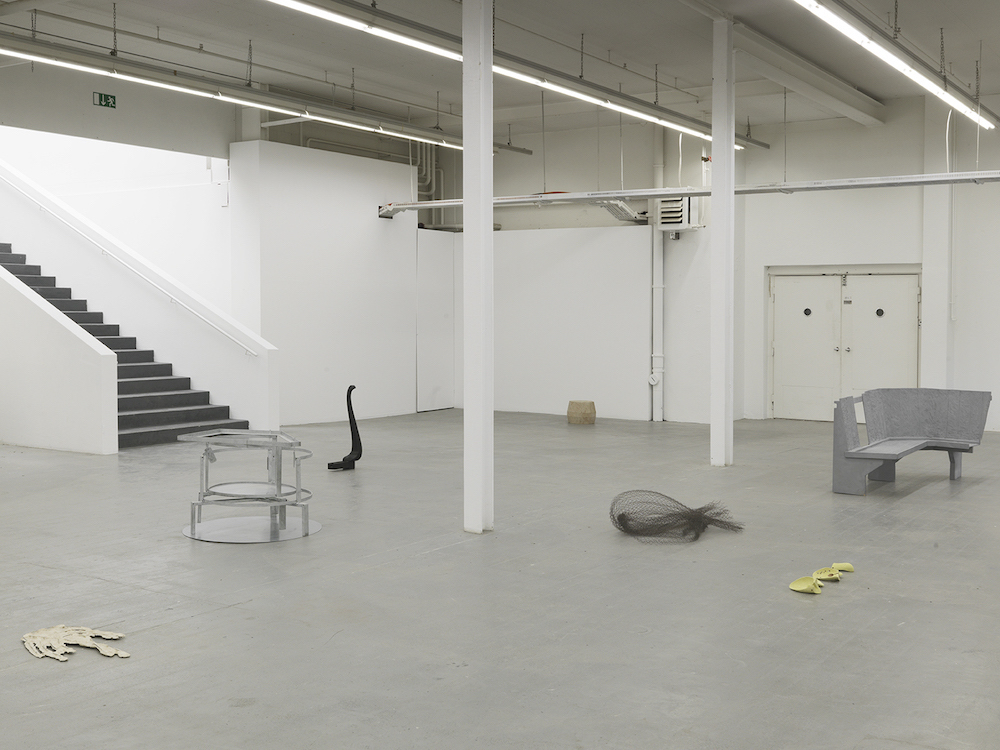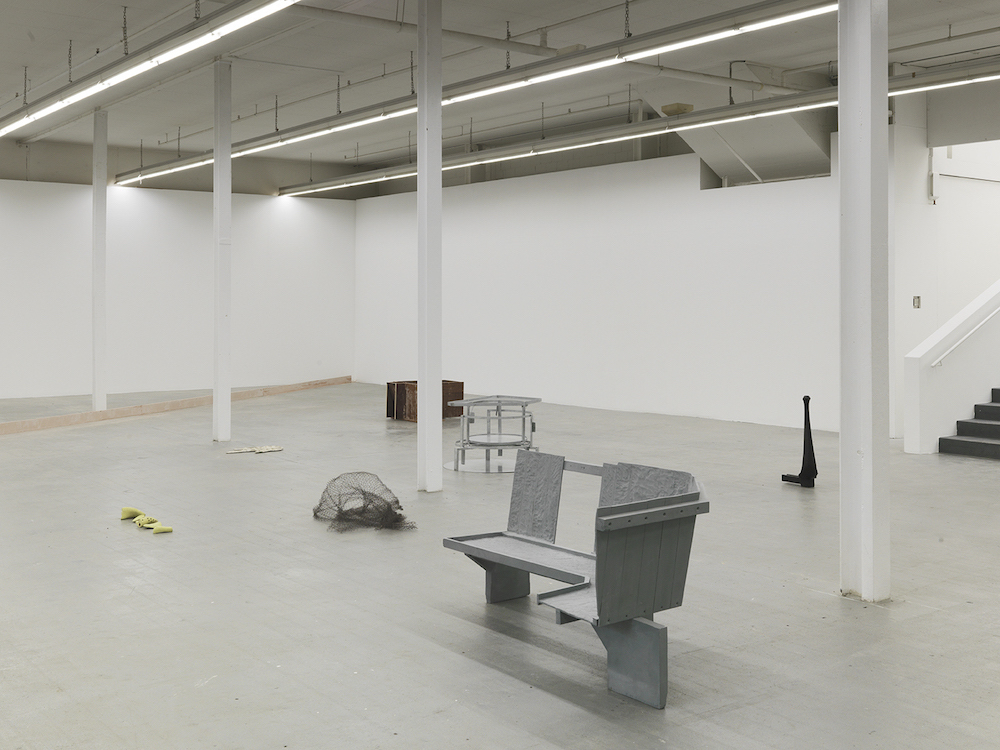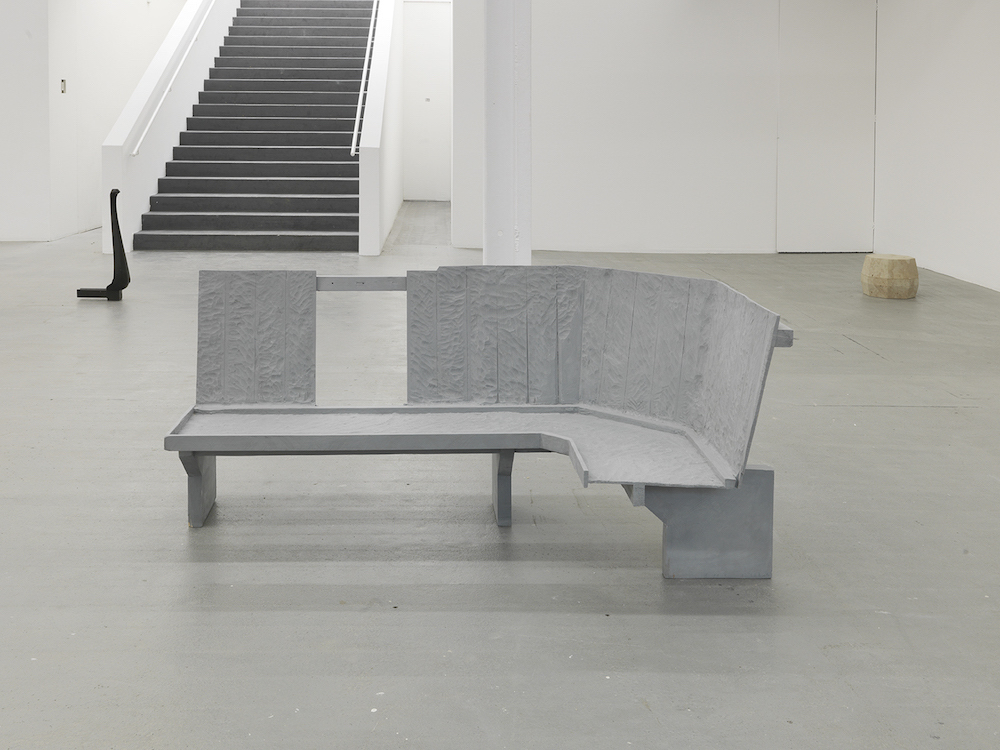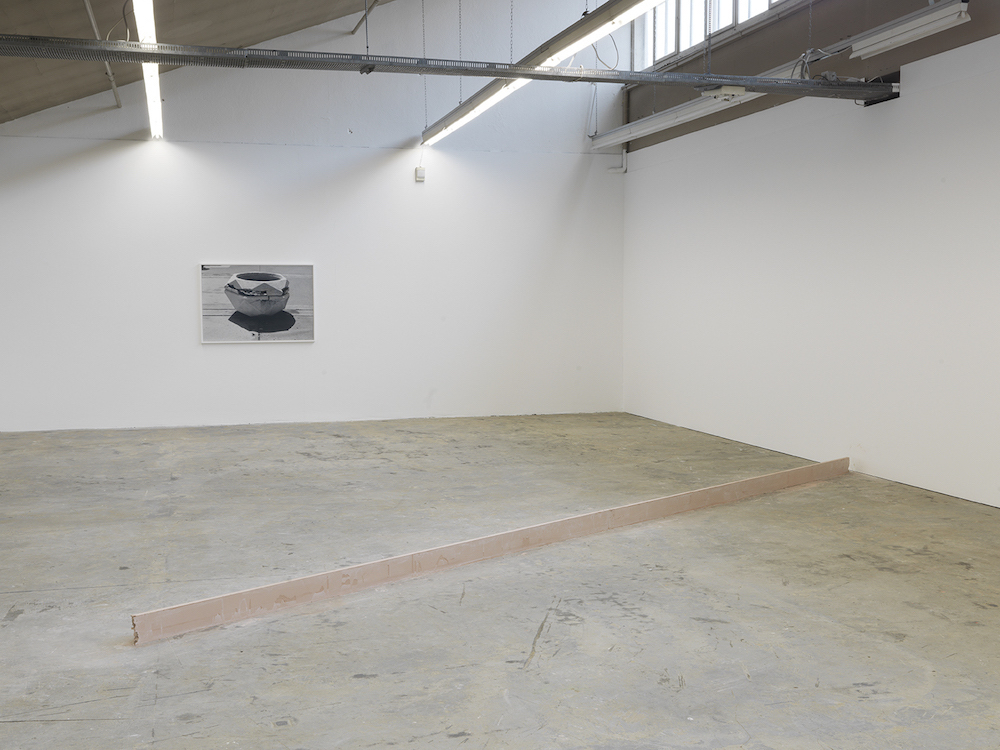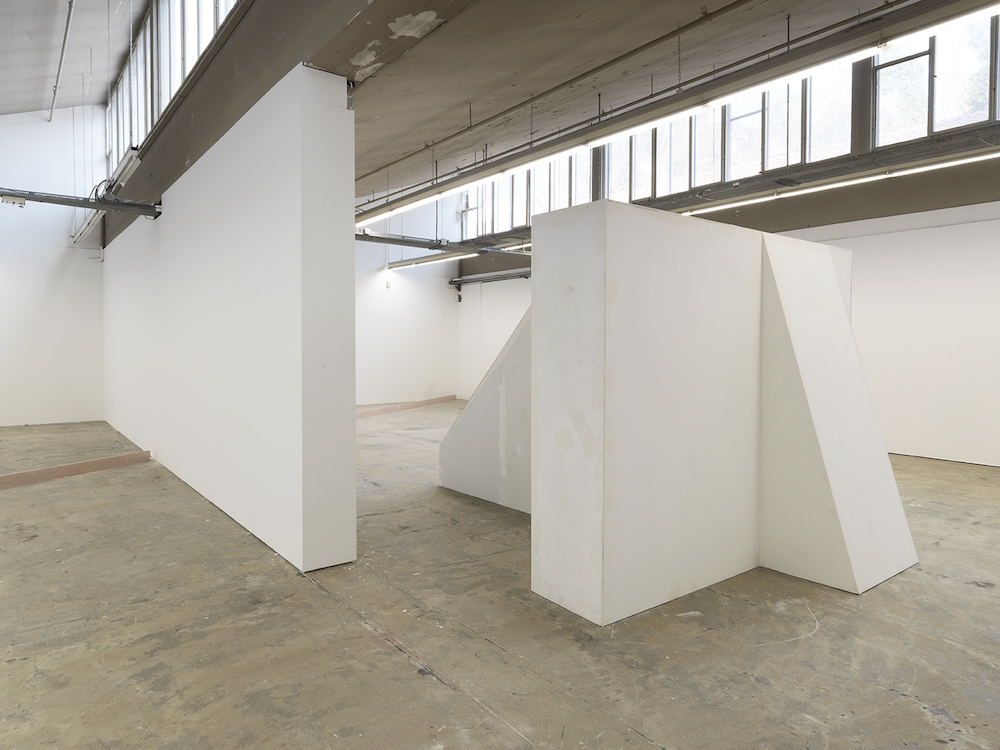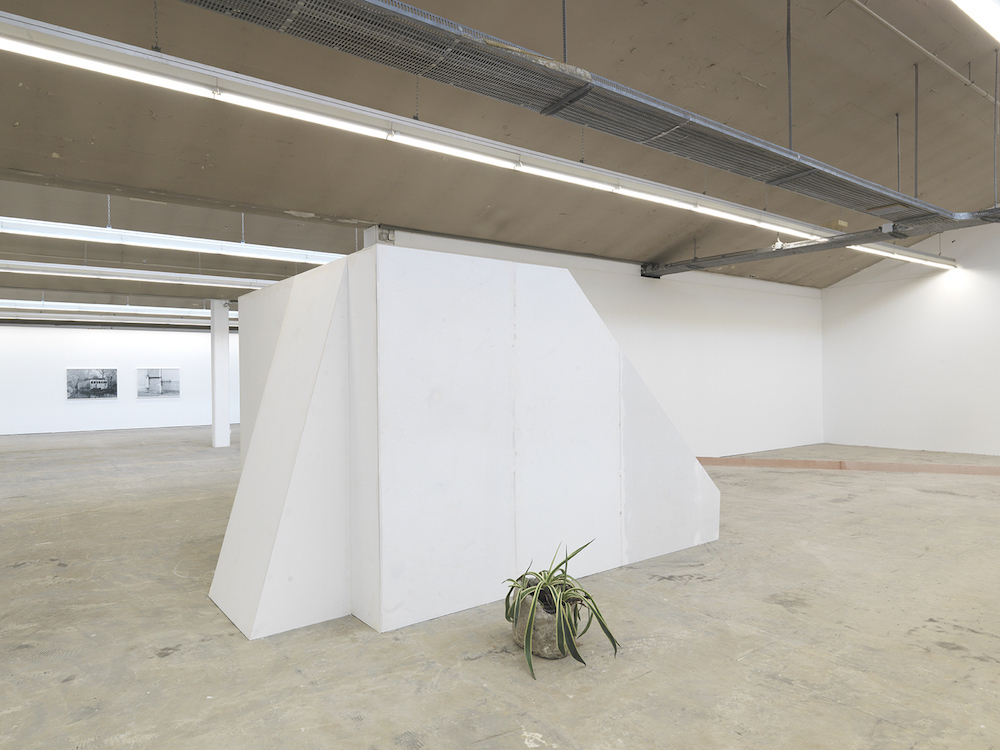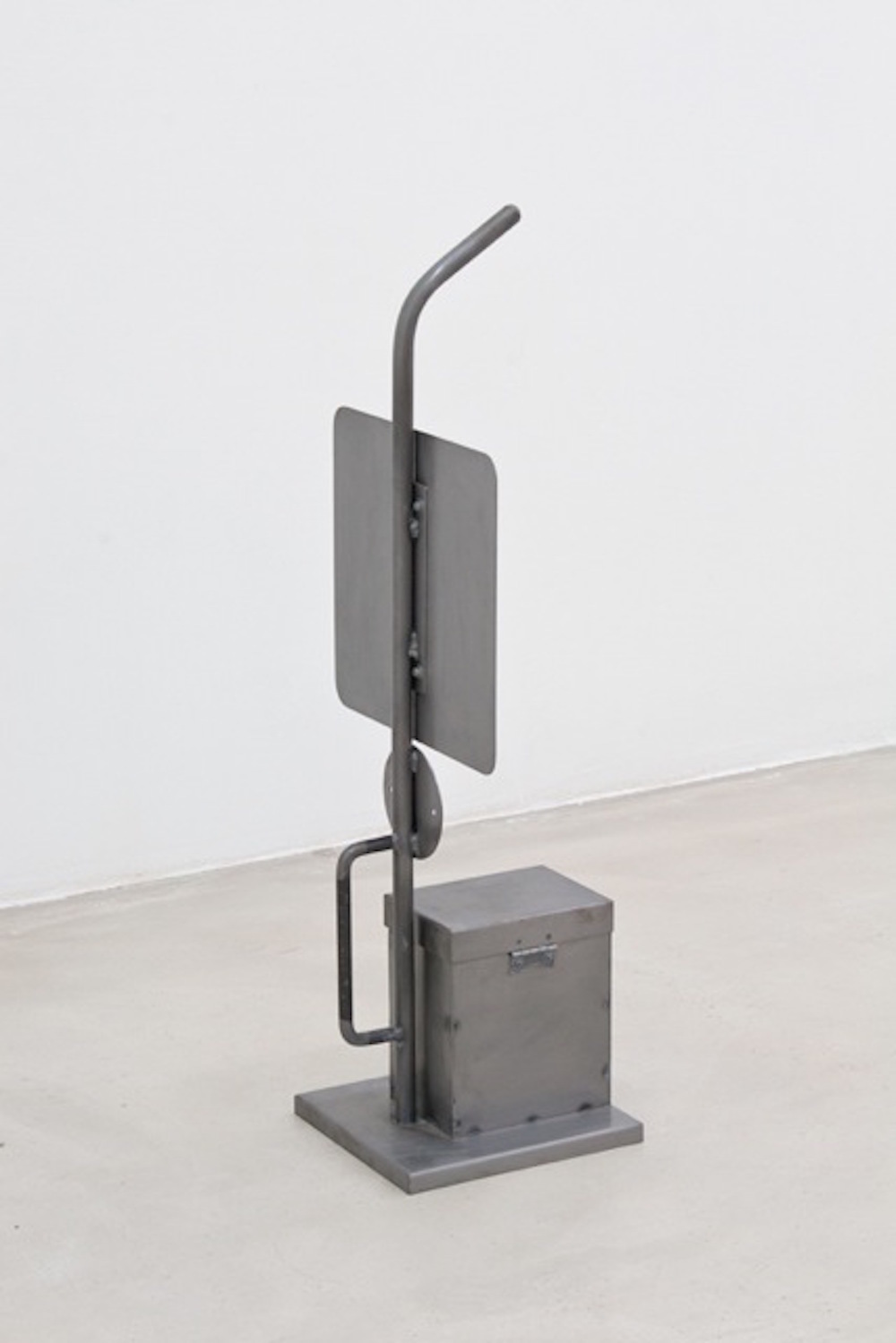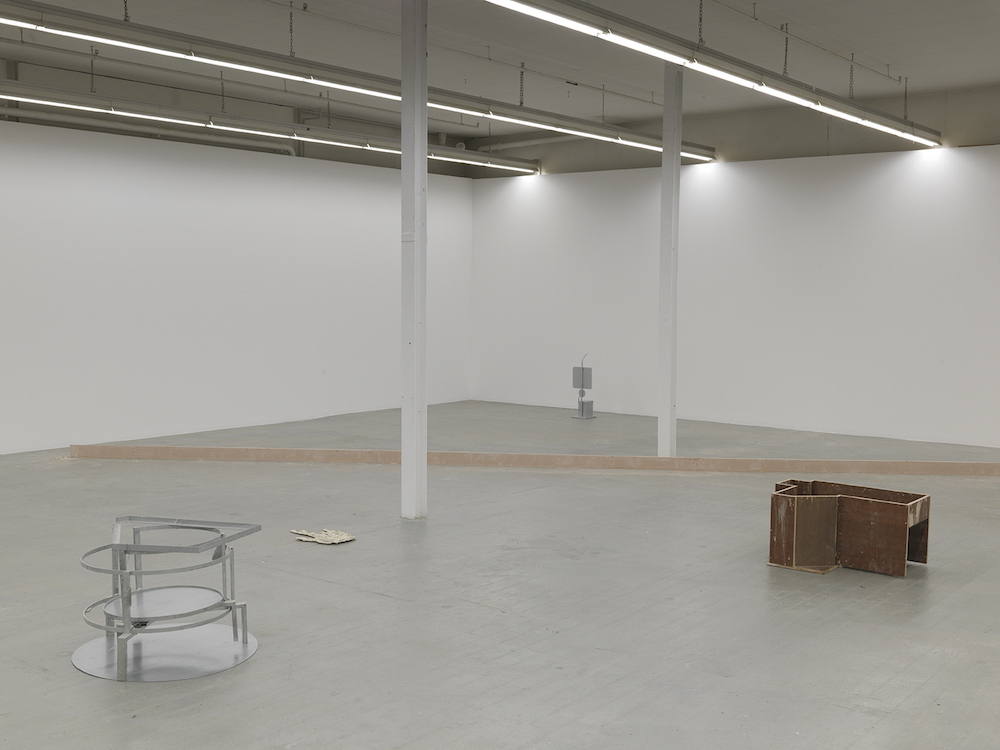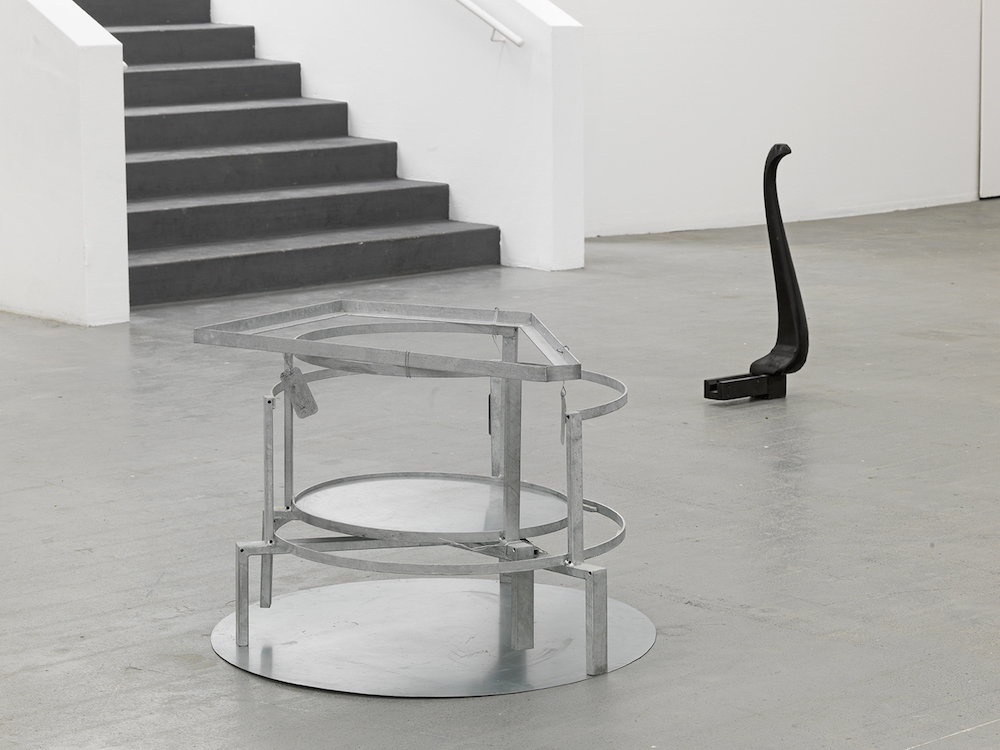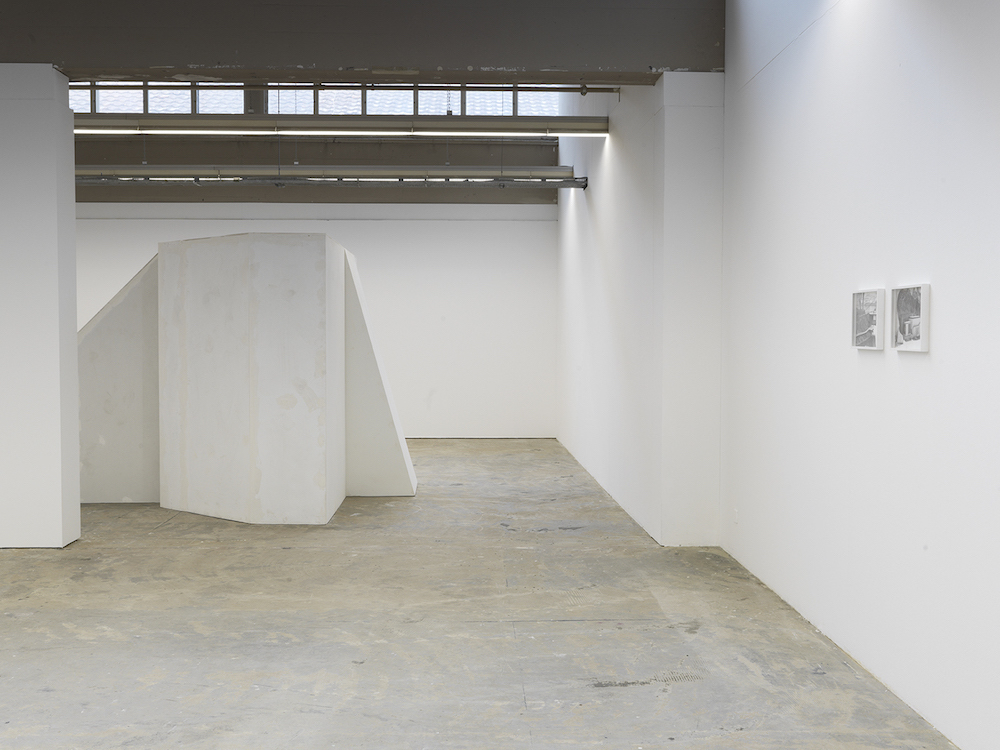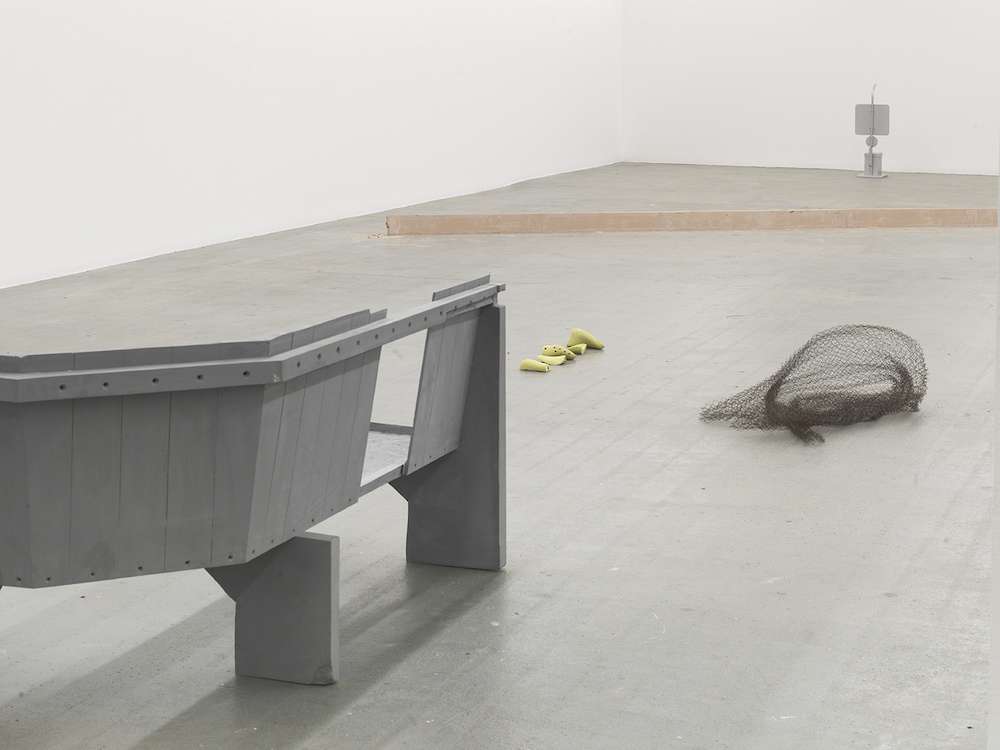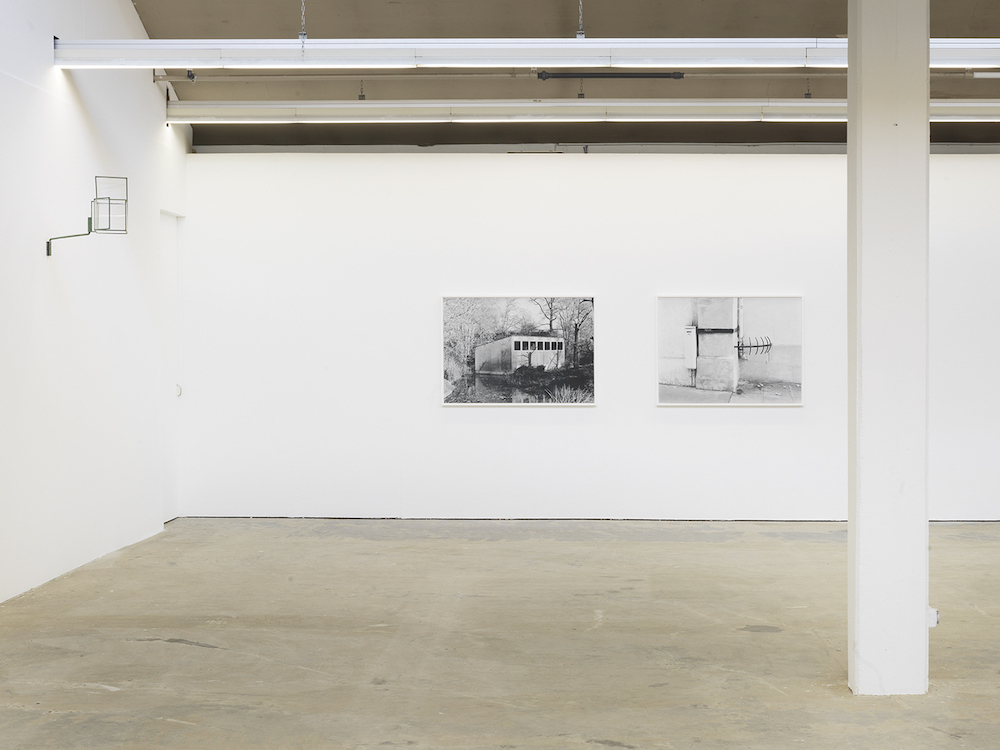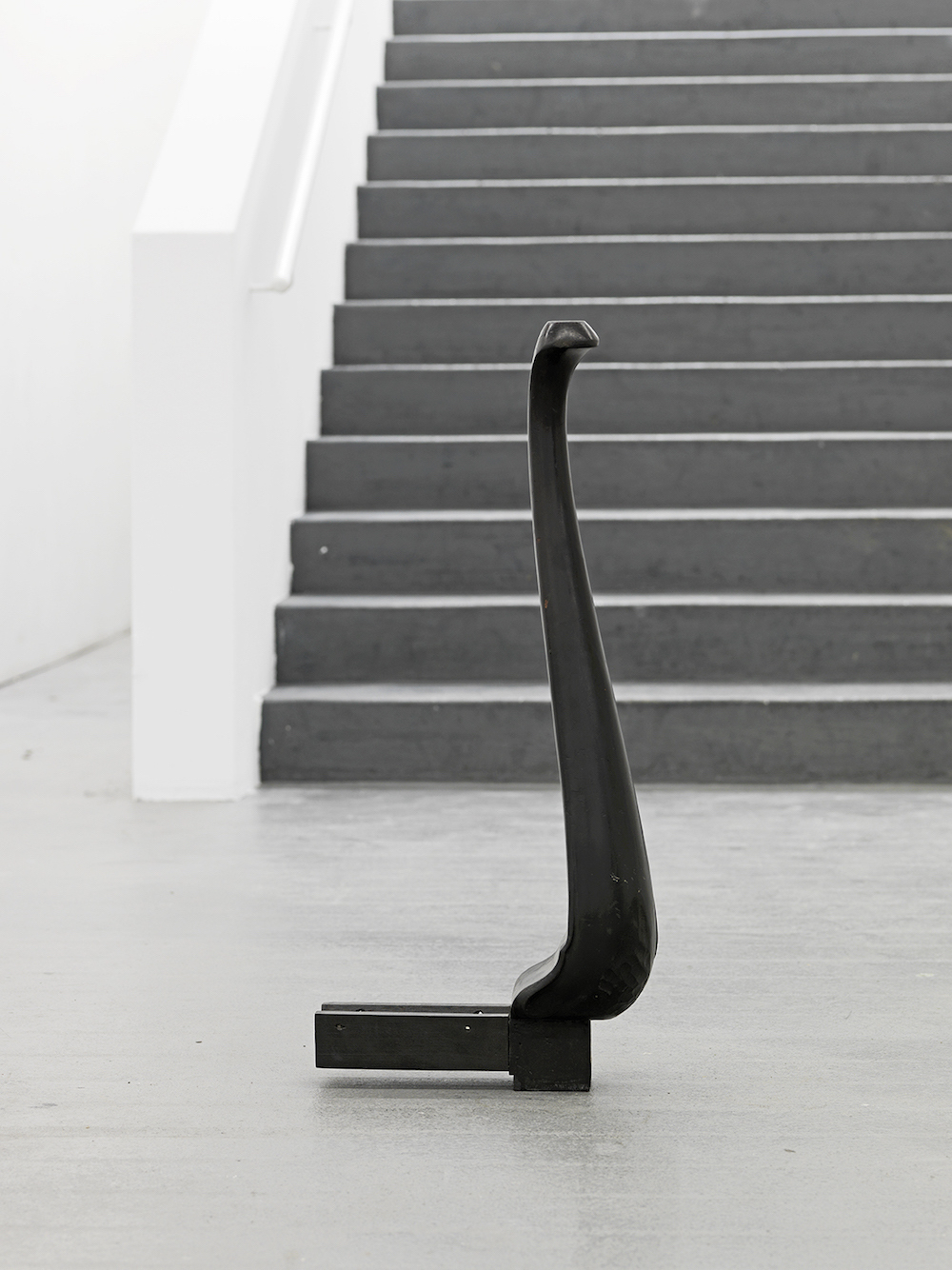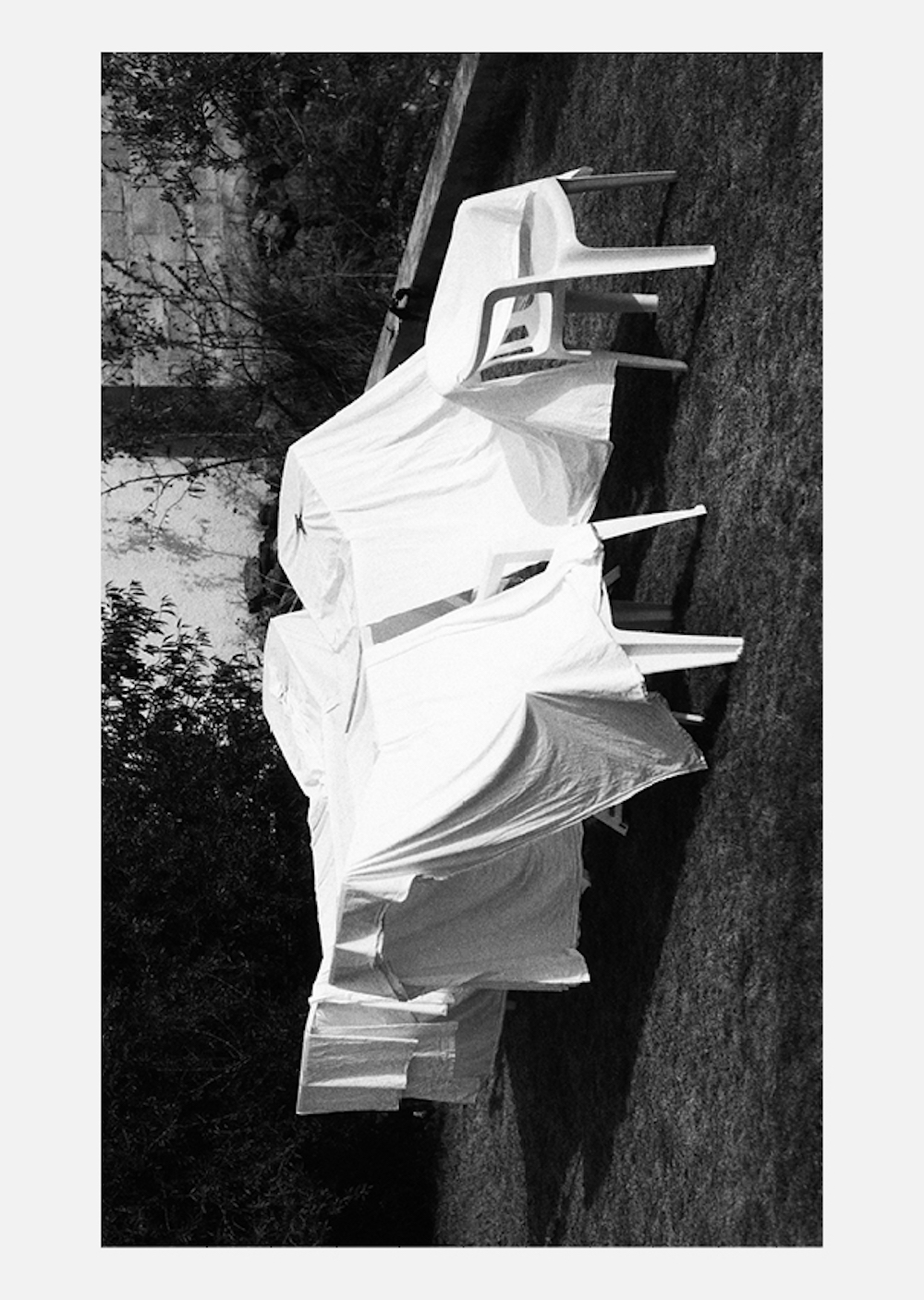Max Leiß
20.1. —
6.3.2016
First institutional solo show by Max Leiß at Kunsthaus Baselland. A publication is produced on the occasion of this exhibition.
Seeing as a creative act
A suspended object in steel and glass, the outline of which could remind you of a surveillance camera; geometric forms like lines or shapes in reddish chamotte clay; minimal sculptural figures from metal or planks that could be architectural models — if it were not for their size preventing that reading. Black and white photographs of building masses that show actual situations in urban spaces, yet still seem strangely unreal.
Among the great qualities of the Basel-based artist Max Leiß (b. 1982) is that he sees the sculptural particularities of objects, forms, architecture and everyday situations and emphasises them with precise interventions and arrangements. He realises objects that communicate their functionality and being of an everyday nature, and thus matter-of-factness, yet upon a further glance those same objects fundamentally retract the first impression through their strangeness and ability to fascinate.
Key to his working process is not merely new production, but also the appropriation of that which already exists and how he deals with it. Objects often come from urban material and are examined for their sculptural potential. It almost seems as if the object is freed from its customary functionality and given ambiguity for once and for all. But not only objects seem to be loosened from the everyday — inspired by these sculptural and visual propositions, the viewer themselves may be a little freer to see and understand their own environment.
However, the sculptor Leiß’ artistic interest goes much further than his approach to found objects. It lies equally in finding forms and transformations, in creating and at the same time challenging volumes, the architectural and sculptural qualities of that which is built, cast, excavated and, indeed, photographed. It is consistent, therefore, that Max Leiß does not merely break objects down, transform and alter them in order to distil the sculptural qualities of these found things, but he also scrutinises the specific particularities of a given exhibition space. For his exhibition at the Kunsthaus Baselland the artist has cast a line of chamotte clay in situ, a line that draws a nearly 40-metre-long diagonal over the three connecting gallery spaces, a line that links them and makes them legible as one whole.
In discussion with Max Leiß, a line occurs that could define his artistic approach very precisely: for him, looking is almost the same as making. With this, he makes an important point. Seeing is understood as a creative act. Attentive observation of spatial constellations in outdoor spaces as well as within the exhibition space is not just an important stimulus for Leiß’ artistic activity itself. In the major stocktaking that an exhibition offers it becomes clear how Leiß creates dialogue between his works, works that have the capacity to relate to each other — sometimes subtly, sometimes more obviously. Moments also become visible that mark Max Leiß’ artistic process: an arrangement, the finding of a form or an intervention can become the catalyst and reason for the next work, leading into it.
Max Leiß’ works are a proposal. An offer to approach his works and to consider them and their interconnections attentively, reflectively and with curiosity, and to see our own environment and our quotidian realities with fresh eyes — with all their particularities, absurdities and their poetry too. It is indeed a creative performance to be able to see and understand the multiplicity on every corner, in every square and every in-between space of the designed civic space as sculptural, cryptic, sometimes unintentional arrangements within the greater urban fabric.
Text by Ines Goldbach
Text is taken from the publication Max Leiß
At the same time of the exhibition by Max Leiß the solo exhibition by Thomas Hauri was on display.
The exhibition and catalogue have been supported by the Roldenfund, Kanton Basel-Stadt Kultur, Futurum Stiftung, werner sutter AG and Migros Kulturprozent as well as the partners of the Kunsthaus Baselland.
